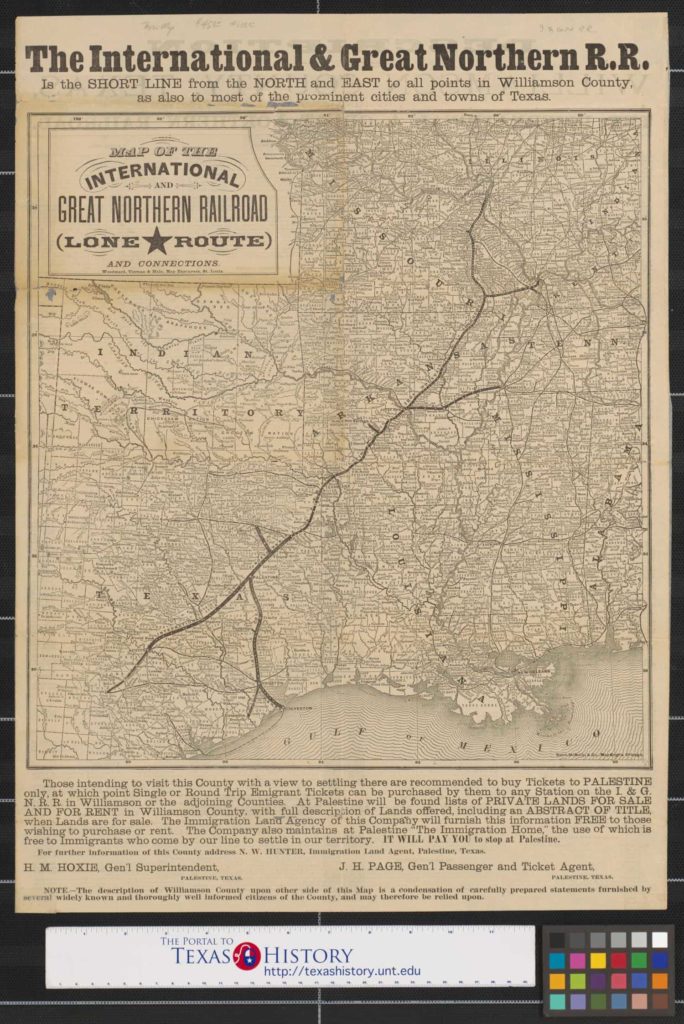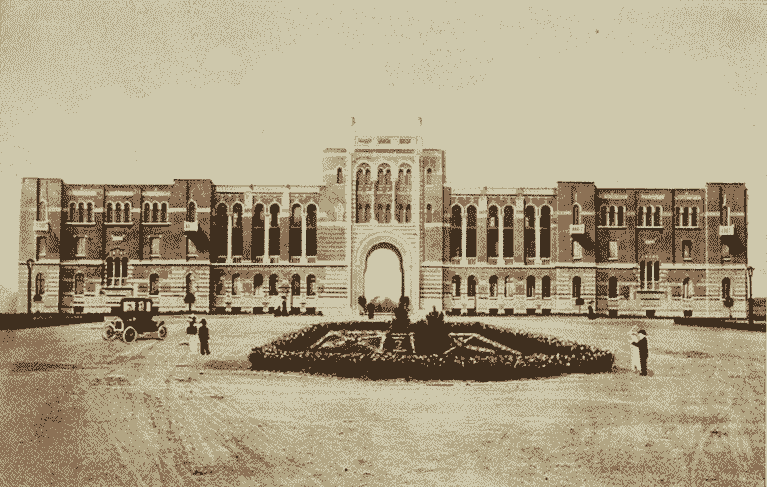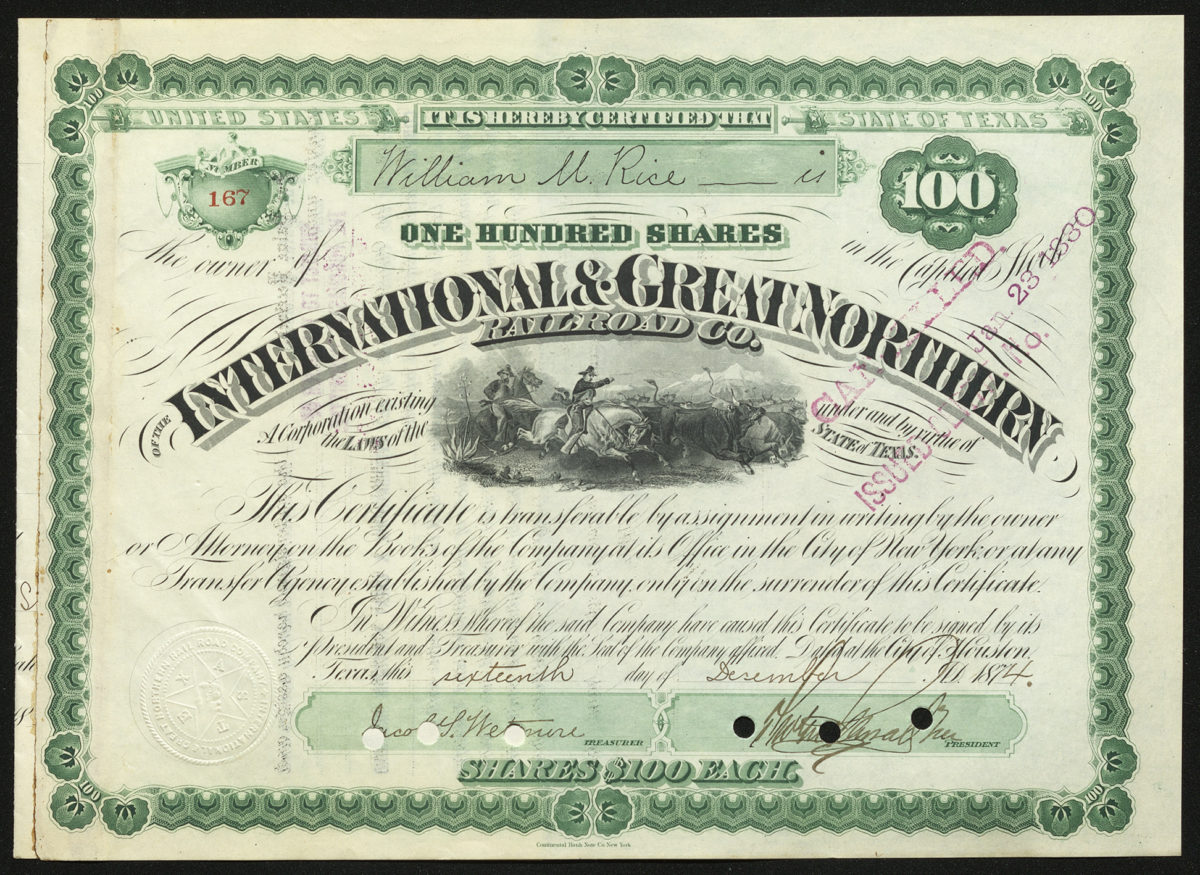
William M. Rice: Philanthropy, Murder, and the I&GN Railroad
The International & Great Northern Railroad Company connected rails throughout Texas and was run by company president and philanthropist William M. Rice. He is best known for his $10 million donation to found Rice University and his mysterious murder, which is still an intriguing facet of Texas history.
Header Image: A map of the International & Great Northern Railroad; authors Woodward, Tiernan, and Hale courtesy Arlington Library, University of Texas [1].
“In 1838, like many young men seeking their fortunes, Rice headed west for Texas…By 1860, he was probably the second wealthiest man in Texas, with a fortune of $750,000.”

The old Rice University Administration Building in 1913; author Farbar courtesy Wikimedia Commons
This certificate for shares in the International & Great Northern Railroad Company has been signed by William M. Rice, a major figure in the history of Texas. Rice was one of the directors of the International & Great Northern Railroad Company (often called the I&GN), a railroad company that operated in Texas. He had initially been one of the organizers of the Houston and Great Northern Railroad which merged with the International Railroad Company to form the I&GN in 1873. This was the same year as the financial Panic of 1873 that resulted from speculation in railroad markets after the Civil War. Many railroad companies went bankrupt, but the I&GN was able to weather the storm. The company would not be so lucky when the Panic of 1907 hit; it struggled for a few years, was foreclosed on in 1911, and absorbed into a larger railroad company.
William M. Rice is known for making his fortunes as a merchant who invested in real estate and railroads in Texas, and he made an indelible mark on Texas’s history when he donated $10 million dollars to found Rice University in Houston after his death. The story behind his death is scandalous. Having accrued a sizeable fortune, Rice became the target of two greedy conspirators: his valet Charles Jones and his lawyer Albert T. Patrick. Jones slowly poisoned Rice with mercury before finally murdering him with chloroform in 1900, at the age of 84. Meanwhile Patrick manipulated Rice’s business and forged a will naming himself. When Jones found out that he had been excluded from the forged will, he turned on Patrick who was ultimately sentenced to death in the murder conspiracy. Patrick’s family was wealthy, so his sentence was commuted to life in prison, and he was pardoned of his crimes in 1912—the same year Rice University opened its doors to students.
The vignette on this certificate is also of interest. While many for railroads depict a train or symbols of commerce, this one shows ranchers herding cattle—a classic Texan scene.
 University of Nevada, Reno
University of Nevada, Reno
